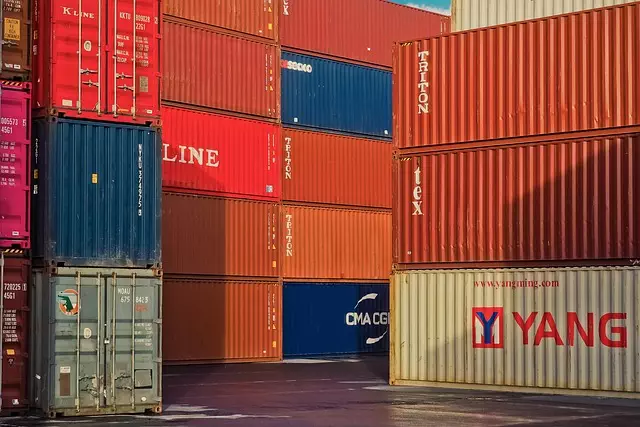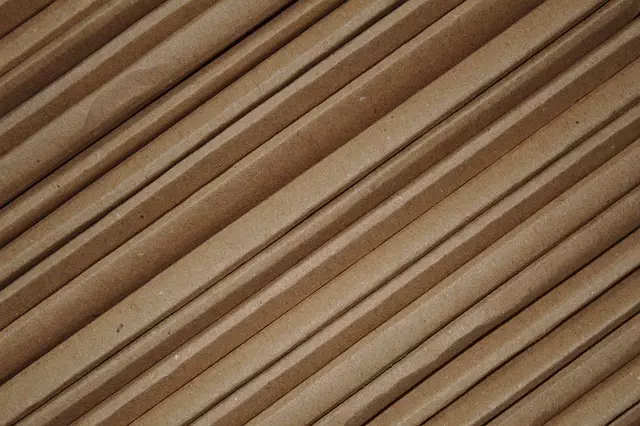The export packaging industry in Holland, Ohio, is transitioning towards carbon-neutral alternatives to address global environmental concerns. This shift involves adopting renewable energy and sustainable practices for wood crate production, aiming to reduce the significant carbon emissions associated with custom and heavy-duty packaging. Local manufacturers are developing innovative solutions, utilizing biodegradable polymers, recycled content, and advanced processing technologies to minimize waste and enhance product protection during international shipping. This trend promotes a greener supply chain, caters to environmentally conscious consumers, and positions Holland, Ohio, as a leader in sustainable export packaging for both domestic and global markets. The future of export packaging is shifting towards eco-friendly materials, digital technologies, and circular economy practices to reduce environmental impact while maintaining quality and cost-effectiveness.
The global demand for efficient and sustainable export packaging solutions has spurred innovation in industries like wood crate manufacturing. This article explores the growing need for carbon-neutral practices within the export packaging industry, focusing on custom export packaging solutions in Holland, Ohio. We delve into heavy-duty materials and design considerations, implementation strategies, benefits, challenges, and future trends shaping a more sustainable approach to wood crate production, with a particular emphasis on the unique requirements of custom export packaging.
- Understanding Carbon-Neutral Wood Crate Production: A Need in the Export Packaging Industry
- The Role of Custom Export Packaging Solutions in Holland, Ohio
- Heavy-Duty Export Packaging: Materials and Design Considerations for Carbon Neutrality
- Implementation Strategies for Reducing Carbon Footprint in Wood Crate Manufacturing
- Benefits and Challenges of Adopting Carbon-Neutral Practices in the Wood Crate Sector
- Future Trends and Innovations for Sustainable Export Packaging Solutions
Understanding Carbon-Neutral Wood Crate Production: A Need in the Export Packaging Industry
In today’s world, where environmental concerns are at the forefront, the export packaging industry is facing a significant challenge: transitioning to carbon-neutral practices. Carbon-neutral wood crate production offers an innovative solution to reduce the carbon footprint associated with international shipping. This approach is particularly relevant for businesses in Holland, Ohio, seeking sustainable export packaging solutions.
Custom and heavy-duty export packaging often involves substantial carbon emissions due to material sourcing, manufacturing processes, and transportation. Carbon-neutral production methods aim to balance these emissions by utilizing renewable energy, implementing efficient practices, and potentially employing carbon offsetting strategies. By adopting these measures, wood crate manufacturers can contribute to a greener supply chain, meeting the growing demand for environmentally friendly export packaging options.
The Role of Custom Export Packaging Solutions in Holland, Ohio
In Holland, Ohio, the demand for sustainable and carbon-neutral wood crate production has led to a surge in the development of custom export packaging solutions. Local businesses are increasingly recognizing the environmental benefits of tailored packaging, which not only reduces waste but also enhances product protection during international shipping. This trend is driving innovation in heavy-duty export packaging designed to meet the unique needs of various industries, from agriculture to manufacturing.
Custom export packaging solutions offer a range of advantages, including increased efficiency and cost savings for businesses. By partnering with local manufacturers, companies can ensure that their wood crates are not only environmentally friendly but also robust enough to withstand rigorous handling and harsh transport conditions. This focus on quality and sustainability positions Holland, Ohio, as a hub for cutting-edge export packaging, catering to both domestic and global markets.
Heavy-Duty Export Packaging: Materials and Design Considerations for Carbon Neutrality
In the realm of sustainable logistics, heavy-duty export packaging plays a pivotal role in reducing carbon emissions associated with global shipping. For businesses seeking eco-friendly solutions, custom export packaging offers a strategic approach to achieving carbon neutrality. Companies like those based in Holland, Ohio, are pioneering innovative materials and design considerations to meet this growing demand.
One key aspect is the transition from traditional, oil-based plastics to renewable alternatives. Biodegradable polymers derived from plant sources or industrial compostables can significantly lower environmental impact. Additionally, designing packaging with a circular economy mindset—modular, repairable, and recyclable—extends the lifespan of materials. Such strategies not only support carbon neutrality but also offer long-term cost savings and enhance brand reputation in the market for export packaging solutions.
Implementation Strategies for Reducing Carbon Footprint in Wood Crate Manufacturing
In the pursuit of carbon-neutral wood crate production, several strategic initiatives can significantly reduce the environmental impact of manufacturing processes. One key approach is to optimize resource utilization within the supply chain. By implementing efficient logging and reforestation practices, ensuring sustainable sourcing of timber, and promoting circular economy principles, manufacturers can minimize deforestation and enhance carbon sequestration. Additionally, adopting advanced wood processing technologies allows for more precise cutting and material recycling, reducing waste and associated emissions.
Custom export packaging solutions, particularly those tailored for heavy-duty applications in Holland, Ohio, play a crucial role. Innovative designs that prioritize lightweight materials while maintaining strength can substantially cut down on the overall weight of crates, thereby reducing fuel consumption during transportation. Further enhancements include utilizing bio-based or recycled content in crate construction and implementing effective recycling programs to capture and repurpose post-use materials. These implementation strategies not only contribute to a smaller carbon footprint but also align with the growing demand for sustainable export packaging solutions globally.
Benefits and Challenges of Adopting Carbon-Neutral Practices in the Wood Crate Sector
The adoption of carbon-neutral practices in the wood crate sector offers significant advantages for both manufacturers and the environment. By focusing on sustainability, companies can reduce their carbon footprint, appealing to environmentally conscious consumers and clients who prioritize eco-friendly export packaging solutions in Holland, Ohio, and beyond. Custom export packaging and heavy-duty options made from sustainable materials can enhance product protection during transit while promoting a greener approach to international trade.
However, transitioning to carbon-neutral production presents challenges. Wood crate manufacturers must explore alternative, eco-friendly materials that meet the strength and durability requirements of various products, especially for heavy-duty export packaging. Balancing cost-effectiveness with sustainability and ensuring consistent quality remains crucial. Additionally, supply chain adjustments and potential changes in manufacturing processes may be necessary to achieve these environmental goals, requiring investment and strategic planning.
Future Trends and Innovations for Sustainable Export Packaging Solutions
The future of export packaging is set to be greener and more sustainable as businesses embrace innovative solutions to reduce their environmental impact. One key trend is the increasing demand for carbon-neutral and eco-friendly materials, moving away from traditional petroleum-based plastics. In Holland, Ohio, and beyond, companies are exploring alternatives such as biodegradable polymers, compostable films, and even recycled wood crates to create heavy-duty export packaging that minimizes waste and promotes a circular economy.
Custom export packaging designed with sustainability in mind is gaining traction across various industries. By adopting digital technologies and advanced manufacturing processes, producers can now offer tailored solutions that meet specific product and shipping requirements while reducing material usage and energy consumption. These innovations not only contribute to a greener planet but also enhance the overall efficiency and cost-effectiveness of global trade, ensuring that heavy-duty export packaging is both robust and environmentally responsible.


